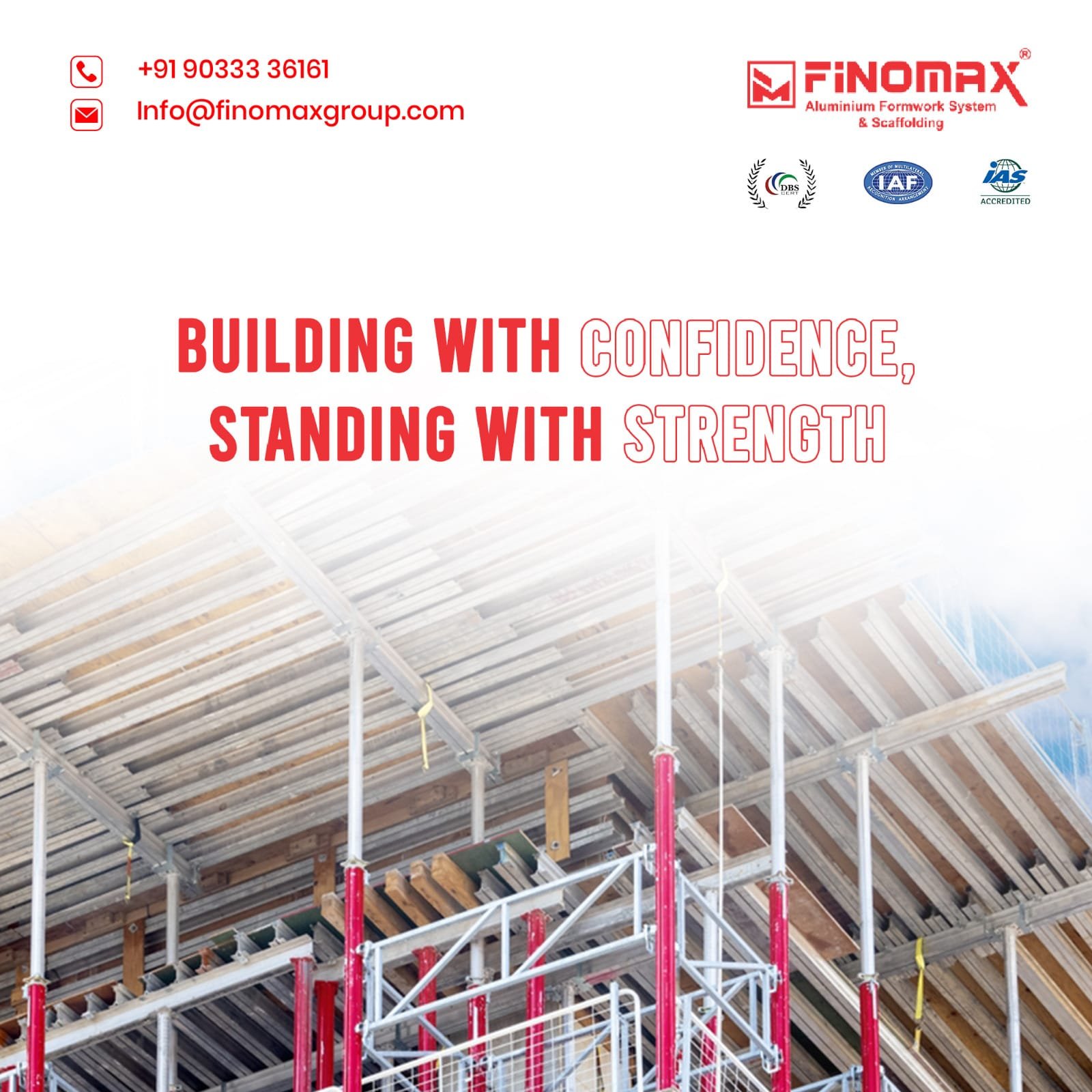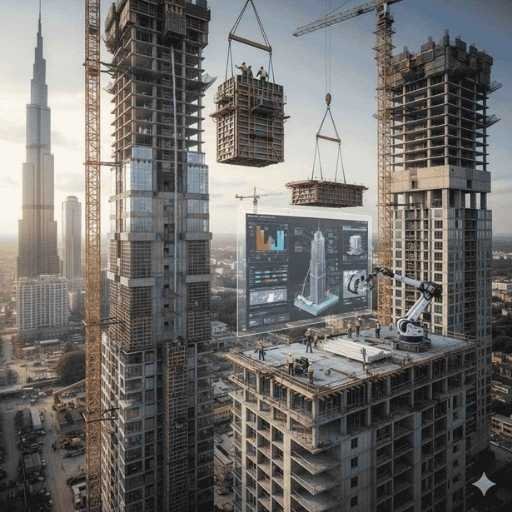In the world of modern construction, Aluminium Formwork Systems have become a game-changer — offering speed, precision, and reusability. But while the panels and frames often take the spotlight, it’s the accessories that truly ensure strength, stability, and seamless installation.
Whether you’re a builder, site engineer, or project manager, understanding the right Aluminium Formwork Accessories is key to achieving flawless construction results. In this guide, we’ll break down the essential accessories, share installation tips, and explain how to ensure compatibility across different systems.
What Are Aluminium Formwork Accessories?
Aluminium Formwork Accessories are the supporting components used to assemble, align, and secure aluminium formwork panels during the casting process. These accessories help maintain formwork stability, ensure accurate dimensions, and simplify installation.
Each accessory plays a vital role — from aligning walls to maintaining the correct spacing between panels and slabs.
Why These Accessories Matter
-
Speed & Efficiency: Modular accessories allow faster setup and dismantling, reducing labor time.
-
Precision: They ensure accurate dimensions and alignment, critical for architectural integrity.
-
Safety: Properly secured formwork minimizes risk of collapse or deformation during concrete curing.
-
Reusability: Many accessories are durable and reusable across multiple projects, improving cost-effectiveness.
1. Wall Ties
Wall ties are one of the most important aluminium formwork accessories, designed to hold two opposing wall panels together while concrete is being poured. They help maintain the exact wall thickness and prevent the formwork panels from spreading apart due to the pressure of wet concrete.
During construction, the wall ties are inserted through pre-set holes in the aluminium panels and fastened using wedges or nuts on both sides. This creates a strong, stable connection that ensures the wall remains perfectly aligned and the formwork holds its shape until the concrete sets.
Key Features and Benefits:
-
Ensures uniform wall alignment — keeps both sides of the wall formwork parallel and evenly spaced.
-
Available in various lengths and load capacities — suitable for different wall thicknesses and structural requirements.
-
Made from high-tensile steel — provides superior strength, resistance to bending, and long-term durability even under heavy concrete pressure.
2. Pins and Wedges
Pins and wedges are small but vital aluminium formwork accessories used to connect and lock adjacent panels securely. They play a key role in maintaining tight joints, proper alignment, and overall formwork stability during concrete casting.
In a typical setup, a pin passes through the aligned holes of two adjoining panels, and a wedge is driven through the pin’s slot to fasten the connection tightly. This simple yet effective locking mechanism ensures the panels remain firmly in place under concrete pressure.
Key Features and Benefits:
-
Quick and secure panel connection — allows panels to be joined or separated easily without specialized tools.
-
Easy to assemble and disassemble — speeds up installation and dismantling, improving on-site productivity.
-
Enhances setup efficiency — ideal for projects requiring frequent formwork reuse and adjustments.
Maintenance Tip:
Always inspect pins and wedges for wear, rust, or bending before reuse. Damaged components can lead to misalignment, concrete leakage, or gaps between panels, affecting both the surface finish and structural accuracy.
3. Tie Rods and Anchor Nuts
Tie rods and anchor nuts are essential accessories used to withstand the lateral pressure of wet concrete during the casting process. Working in combination with wall ties, they help maintain the correct spacing and alignment of opposing formwork panels, ensuring the structure remains stable until the concrete sets.
A tie rod runs through the formwork panels, and anchor nuts (or wing nuts) are fastened at both ends to secure the system tightly. Once the concrete has cured, the nuts are removed, and the tie rods can often be reused for subsequent projects.
Key Features and Benefits:
-
High-tensile steel construction ensures superior strength and resistance to deformation under concrete pressure.
-
Available in multiple lengths and diameters to suit various wall thicknesses and design requirements.
-
Reusable across multiple projects, offering excellent cost efficiency and sustainability.
Installation Tip:
Always apply lubricant to the tie rods before installation. This prevents seizing during removal and extends the service life of both the tie rod and anchor nuts.
4. Beam Side and Beam Bottom Panels
Beam side and beam bottom panels are specialised aluminium formwork components used to form, shape, and support beams during concrete casting. They ensure that the beam’s size, alignment, and surface finish meet the structural design requirements.
These panels are designed for easy connection with slab formwork panels, enabling a seamless transition between beams and slabs. Their precision-engineered design guarantees accurate beam geometry and superior concrete quality.
Key Features and Benefits:
-
Provide accurate beam alignment and dimensions for consistent results.
-
Essential for maintaining structural integrity in load-bearing elements.
-
Designed for easy integration with slab panels, improving installation efficiency.
Compatibility Tip:
Always match the panel sizes and connections with your slab layout to ensure smooth assembly and eliminate alignment errors during formwork setup.
5. Prop Heads (U-Heads and Drop Heads)
Prop heads are vital accessories used to support vertical loads transferred from slabs, beams, and panels down to the ground through adjustable props.
There are two main types:
-
U-Heads: Support and hold beam bottoms in position during casting.
-
Drop Heads: Allow early removal of slab panels while keeping the props in place, enabling faster reuse and improved construction speed.
Key Features and Benefits:
-
Facilitate safe and efficient load transfer from slabs to supports.
-
Enable early striking, reducing project cycle time.
-
Durable and reusable across multiple projects.
Safety Tip:
Before casting, ensure all props are level, securely locked, and placed on firm, stable ground to prevent settlement or misalignment.
6. Corner Angles and External Corners
Corner angles and external corners are essential for connecting panels at wall intersections, ensuring formwork rigidity and precise geometry. They play a crucial role in maintaining right angles and preventing concrete leakage during pouring.
Available in both internal and external configurations, these components help create clean, well-defined corners for walls, columns, and other structural elements.
Key Features and Benefits:
-
Provide rigid and accurate connections at corners.
-
Prevent leakage and deformation, ensuring smooth concrete surfaces.
-
Compatible with a wide range of aluminium formwork systems.
Installation Tip:
Always use proper corner locking pins and wedges to ensure tight joints and prevent misalignment during the pour.
7. Safety Brackets and Scaffolding Components
Safety brackets and scaffolding components are essential for ensuring worker safety, stability, and accessibility on construction sites. They provide secure platforms and support systems, especially during high-rise formwork installations.
These accessories include working platforms, guardrails, and support brackets, all designed to maintain a safe and stable working environment while concrete is being poured and cured.
Key Features and Benefits:
-
Enhance worker safety and access at elevated heights.
-
Provide stable and reliable platforms for inspection and pouring.
-
Designed to meet industry safety standards for high-rise projects.
Safety Tip:
Always comply with site safety regulations and load-bearing limits during installation to prevent accidents and ensure long-term system reliability.
Ensuring Accessory Compatibility
Not all aluminium formwork accessories are universal. Compatibility depends on factors such as manufacturer specifications, panel dimensions, and connection types. Using mismatched components can lead to poor alignment, leakage, or safety issues.
To ensure smooth installation:
-
Source accessories from the same manufacturer whenever possible.
-
Verify locking systems, tie hole spacing, and panel thickness before assembly.
-
Conduct trial assemblies to check fitting accuracy.
-
Maintain proper lubrication and cleaning to extend the lifespan of accessories.
Pro Tip:
Partnering with a trusted supplier such as Finomax Aluminium Formwork Systems ensures that your panels and accessories are perfectly compatible, delivering optimal performance and long-term reliability.
Installation Tips for Aluminium Formwork Accessories
Proper installation is key to maximizing formwork efficiency, safety, and reusability. Follow these practical guidelines to achieve the best results:
-
Plan layout in advance: Identify the correct placement of each accessory before assembly.
-
Check alignment frequently: Use spirit levels and measuring tapes to ensure accuracy during setup.
-
Avoid over-tightening: Excessive force can deform aluminium panels and reduce their lifespan.
-
Clean after every use: Remove all concrete residues to prevent corrosion and sticking.
-
Store properly: Keep accessories dry and organized to maintain their condition between uses.
Why Accessories Matter for Efficient Formwork Systems
A well-maintained set of aluminium formwork accessories ensures consistent performance, durability, and construction quality. When chosen and used correctly, they contribute to:
-
Faster setup and dismantling of formwork systems.
-
Reduced labor effort and improved workflow efficiency.
-
Superior concrete finish and accurate structural alignment.
-
Extended lifespan of both panels and accessories.
-
Enhanced on-site safety and reliability.
In conclusion, aluminium formwork accessories are not just supporting components — they are the key to achieving precision, speed, and safety in modern construction. Investing in high-quality accessories from reliable suppliers like Finomax ensures long-term performance, reduced costs, and better results across every project.
Conclusion
The strength and success of any aluminium formwork system lie in the details — and accessories are those details that hold everything together. From wall ties to drop heads, every component plays a critical role in ensuring stability, safety, and precision.
At Finomax Aluminium Formwork Systems, we provide a complete range of formwork panels and accessories engineered for durability, compatibility, and ease of use — helping you build faster, smarter, and more efficiently.
Key Takeaways
-
Aluminium Formwork Accessories are essential for accuracy, speed, and safety.
-
Always ensure compatibility and proper installation.
-
Regular inspection and maintenance extend accessory life.
-
Partner with Finomax for reliable, high-quality accessories and systems.
Key Aluminium Formwork Accessories & Their Roles
-
Wall Ties Function: Connect opposite formwork panels to maintain consistent wall thickness and resist lateral pressure during concrete pouring.
-
Pins and Wedges Function: Secure panels together tightly and allow quick assembly and disassembly. Wedges lock the pins in place for stability.
-
Prop Heads / Beam Supports Function: Support horizontal members like beams and slabs, ensuring correct elevation and load distribution.
-
Corner Angles / Corner Pieces Function: Provide precise alignment at wall intersections and corners, preventing leakage and deformation.
-
Soffit Lengths and Soffit Beams Function: Support slab formwork from below, maintaining flatness and level during casting.
-
Tie Rods and Tie Nuts Function: Reinforce the formwork against concrete pressure and keep panels from bulging outward.
-
Wall Brackets and Wallers Function: Offer lateral support and alignment for vertical panels, especially in high-rise construction.
-
Formwork Liners Function: Provide smooth finishes or textures to the concrete surface, depending on the design requirements.
-
Clamps and Couplers Function: Connect and stabilize adjoining panels or accessories, ensuring rigidity and safety.






